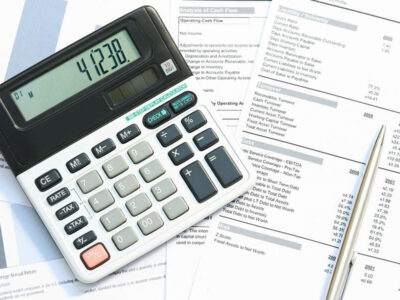
Let’s put the COGS formula into practice, since this is an especially important part of the inventory accounting process. Cost of goods sold refers to the total production and purchasing costs that go into a product sold by a business. It includes direct materials costs, labour costs, and manufacturing costs but does not include indirect expenses, such as marketing costs, distribution costs, and taxes. Before we dive into the details, here’s a quick recap of assets = liabilities + equity some of the key terms and inventory accounting formulas you should know. It breaks down the essential terms, methodologies and best practices that ensure accurate accounting for inventory. The amount of inventory determined by a physical inventory shall replace the book inventory which has been calculated since the last physical inventory.
Connections Live 2024 Event Inspires Convenience Industry Leaders and Innovators
It helps companies to identify opportunities for improvement and optimize fuel consumption. The top section of the Standard Fuel Variance report compares the difference in the meter readings to the amount of fuel posted. The left column is the current data, which may represent one day or a week depending on how often meter and stick readings are updated. The right column is the monthly variance information; it is reset when the end of period for vehicles is processed (SEV). The bottom section is the tank summary, which shows the variance in gallons and dollars between the computed inventory and the actual inventory. It’s common for businesses to integrate accounting and inventory software systems so that accounting records are perpetually updated as stock movements happen.

The Process of Fuel Inventory Reconciliation
- Let’s dive into the core issue of reconciling primary storage tanks (we’ll review the key challenges of tracking fuel further down the operations chain in part 2 of this mini-series).
- Vehicle and driver logbooks should also include the distance traveled each day to monitor fuel efficiency.
- By monitoring fuel inventory levels and usage patterns, companies can make informed purchase decisions, reduce costs, and avoid fuel shortages.
- This presents a challenge when determining the profitability of goods sold.
- He also has a professional background in the information-technology industry as a support technician.
- Companies using LIFO often disclose information using another cost formula; such disclosure reflects the actual flow of goods through inventory for the benefit of investors.
Regular fuel audits help businesses to identify fuel losses due to theft, fraud, or leakage. It also ensures that fuel usage and inventory levels are accurate and any discrepancies can be investigated and resolved promptly. Consignment inventory accounting is the collaborative effort between a supplier (the consignor) and a retailer (the consignee) to maintain accurate inventory records for goods on consignment. Accurate inventory records provide for efficient operations and allow accountants to correctly value a company’s inventory property. The cash basis inventory accounting method is where expenses are recorded when cash is spent and income is recorded when cash is received. Inventory accounting helps you to correctly track the cost of any inventory sold and accurately value any unsold inventory that remains at the end of each accounting period.
LIFO

Accounting for pipeline inventory, also called in-transit inventory, comes with unique complications due to the sometimes-unclear ownership of in-transit goods. How pipeline inventory is accounted for largely depends on the terms and conditions of the shipping agreement between the shipper and the receiver. Working out landed costs is challenging; although your suppliers and customs brokers invoice you promptly, transport providers regularly take several weeks to send you a bill. Customers can track changing total inventory value in the Inventory Progress report.

Accounting for stock discrepancies
- Stay up-to-date on current fuel prices and market trends with our NYMEX price feed (15 minute delay to the live market).
- Our aviation fuel management solution includes tank farm automation that leverages a full line of level measurement and field instruments, as well as exceptional engineering for better control and hydrant pump performance.
- Inventory accounting helps you to correctly track the cost of any inventory sold and accurately value any unsold inventory that remains at the end of each accounting period.
- As with all adjustment options in RTA, it’s best to post adjusting entries, whenever possible, where the problems occurred so there is an audit trail.
- You can also engage with the largest audience of fuel and convenience store customers through the GasBuddy app.
Although Excel is a powerful business analysis tool, it can be error prone and is time consuming to use. A business must document its inventory transactions by publishing inventory accounting journal entries in the accounting ledger. A stock take discrepancy occurs fuel inventory accounting if the actual quantity of stock held by a business is different from the quantity shown in its inventory records. Inventory accounting methods are the ways in which revenue and expenses are recorded – more specifically, when they are recorded.
Inventory costing methods explained
In this instalment of Fleeting Thoughts (the first of a 3-part series), we discuss the problems inherent to manual fuel reconciliation and the production of related reports. If you’ve been pondering the efficiency of your fuel inventory management, read on to learn why you should leave those outdated and painful manual processes behind. Traditional fuel inventory management methods involve manual tank dips, manual tank level gauging, and manual record keeping. We’re unsure if any fleet manager relying on these manual processes can ever be fully secure in their data sets. Regular fuel data analysis gives businesses valuable insights into fuel usage patterns, efficiency, and costs.

Inventory accounting and business strategy
Inventory accounting is the practice of valuing and reporting on the physical inventory a business holds. Under this method, merchandise additions are made at the cost value, not the retail value. The retail value is added to the retail book inventory via a price change after the item is sold. The retail value will be determined by the related department sales found on the closing register tape. For accounting purposes, gasoline inventories are maintained using Cost Accounting Method—a method by which a business can maintain and account for the value of its inventory. As items are added to the inventory, the value of the inventory rises by an amount equal to the cost of the additions.
This training will take place onsite at your company’s office over the course of seven to ten days. Our process automation modules are designed to simplify your work and reduce errors, freeing up your time to focus on what matters most, increasing your company‘s profitability. He’s visited over 50 countries, lived aboard a circus ship, and once completed a Sudoku in under 3 minutes (allegedly). The term inventory accounting encompasses several inventory bookkeeping strategies. Here are some common examples of inventory in accounting and key considerations for each approach. Income statements, statements of retained earnings and balance sheets are financial documents essential to a company’s operations, and sometimes even required by law.








